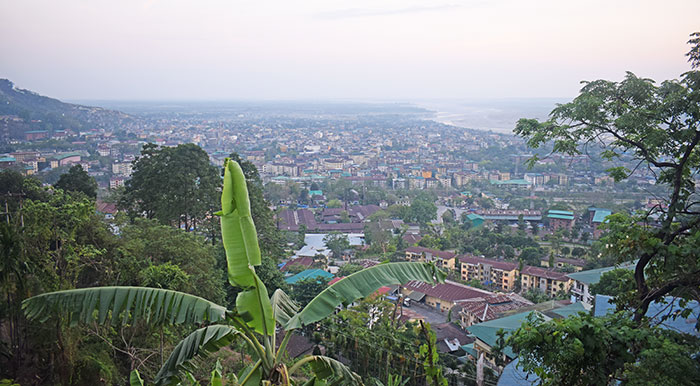
Phuentsholing
Rajesh Rai | Phuentsholing
Ever since the town came into existence, Phuentsholing has been carrying the label and load of being the country’s biggest commercial hub.
Highlights such as the largest industrial estate, more than 90 percent of the country’s import entering from it, and its proximity to Jaigaon set Phuentsholing apart from other border towns in the south.
Was Phuentsholing the biggest commercial hub in the country even in 1960s? No. Is it now? No.
What is it then?
Phuentsholing is a trade transit centre, the biggest in the country. It is yet to become the country’s biggest trading town.
Former thrompon, Tsheten Dorji said Phuentsholing cannot be the biggest trade hub in the country.
“It is just a transit centre,” he said.
“Goods and commodities enter Phuentsholing and get distributed to 20 dzongkhags.”
Tsheten Dorji said he came to Phuentsholing as a young boy in the late 1950s. His parents had come from Trashigang to contribute labour tax (woola) for the Phuentsholing-Thimphu national highway construction. This is how many families from other dzongkhags settled in Phuentsholing.
Many who own buildings in Phuentsholing are also not in the town today, Tsheten Dorji said.
A businessman, Namgay, said the landlords who are not in Phuentsholing, are just collecting rents and are least bothered how the town grows.
“This is also one reason why the fronting problems became a national issue,” he said.
“The landlords don’t know who comes in and runs business in their spaces.”
Namgay, who has been in Phuentsholing for the last 10 years, said Phuentsholing was just a transit centre and Jaigaon was a trade hub.
A resident said Phuentsholing as a thromde had all plans and policies in place to change itself into a commercial hub but there was implementation failure.
“Just recently, a huge road portion was dug out to connect a new house with water supply,” he said, adding that it was a menace to the public.
“A thromde office must have the entire blueprint of the town.”
Phuentsholing: Then and now
In 1950s, Phuentsholing was known as Hatidara, which means “elephant hill” in Nepali. The town got the name because wild elephants frequented the spot where the town is today.
Between the late 1970s and early 1980s, the town had well-lit streets, decent hotels, movie theatres, and several shopping centres.
Given its strategic location on the Indo-Bhutan border, Phuentsholing was naturally referred to as the “commercial capital” and the “Gateway to Bhutan.” Phuentsholing was chosen as a focal point of development. It became transit camp for Thimphu, Paro, Haa, Punakha, and Wangdue.
Today, any inhabitant from this town will share fond memories of how the town was in 1980 and 1990s. Gol Building, Mig, and Norgay Cinema Halls come to mind.
Although these have become things of the past, Phuentsholing has grown significantly in terms of infrastructure.
The latest addition is the four-lane Northern Bypass which connects the RBA curve. Vehicles heading to Thimphu and beyond from the mini dry port will not have to enter the town. With this bypass, Phuentsholing now has the fourth bridge over the Omchhu.
Phuentsholing Township Development Project (PTDP) is another mega project that will change how Phuentsholing looks and functions as a town forever.
A mega dry port construction has already begun in Pasakha, which will cater to the needs of the entire Pasakha Industrial Estate and other dzongkhags.

